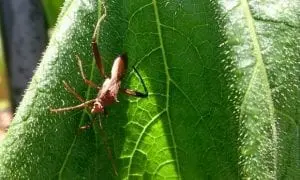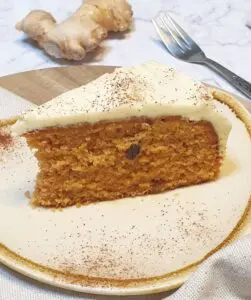Thinking about buying a lifestyle property to grow your own organic produce but aren't sure what to look for?
Well, you're not the only one and I receive questions about lifestyle acreage living (similar to the one from Fred below) all the time asking for advice on where to start and what to buy and it's totally understandable because purchasing a property really is a huge decision!

Here's the question,
I have been watching your YouTube videos and they are very helpful and useful.
I have been looking for an acreage around an hour or two hours drive from Brisbane and places I found were either vulnerable to flooding or the quality of the soil is too poor for growing.
Besides soil quality what other factors are important to take into account for organic farming? Which areas do you consider are good for self-sufficient organic farming?
If the soil quality is poor, is it worth considering and how long will it take to improve soil quality for growing vegetable and fruits?
I would be grateful and appreciate your thoughts. Fred
I'm going to refer Fred to this article when replying to his message/questions so in order to not keep him waiting I won't waffle on too much but I will break his message up into segments for easier reading.
Here we go…
I have been watching your YouTube videos and they are very helpful and useful
Answer – Thanks mate! My YouTube Channel is a great way for me to connect with people and share ideas or information I have about becoming more self-sufficient not just on acreages/homesteads but wherever a person may live.
I have been looking for an acreage around an hour or two hours drive from Brisbane
– and places I found were either vulnerable to flooding or the quality of the soil is too poor for growing…
Answer – Finding a property can be an arduous process there's no doubt about it and the last thing anyone wants to do is spend all that money only to find they aren't happy with the purchase after a few weeks or months.
Having said that, you have to be really lucky to find the perfect property at the right price just at the time you decided to look. Personally, I'm not entirely convinced that the "perfect property" exists anyway because there's always something that could be better or improved no matter what property.
And imperfections seem to be particularly evident the larger the land size because there are more things to consider than just the house, aspect, suburb reputation, proximity to the city, and street appeal… (can you tell I'm not a fan of inner suburbia living)? Nevertheless, there still is a reasonable number of good properties out there and if one of the main criteria you have is for the property to be within 2 hours of Brisbane then with some patient searching I'm confident you'll find one that has limited flooding susceptibility and reasonable soil.
Speaking of flooding (we'll get to soil later) under the new flood zoning coverage maps drawn up by Govts and insurance companies after the 2011 and 2013 Brisbane/Queensland floods, it's hard to find anywhere that isn't deemed a "potential flood risk." Don't be fooled by the propaganda, the only reason the SE corner was re-mapped and the flood zone expanded (outrageously) was to enable insurance companies to widen the net of customers it could legally enforce to pay higher premiums.
Our property is a prime example, over the past decade, through the biggest floods and heaviest rain fall on record our property never came close to flooding – we live on top of a hill for goodness sake! Yet, our insurance premium tripled overnight as a direct result of the remapping exercise. The price rise was about $2000pa and due to this extravagant hike, our insurance company was obligated to call me personally and advise me of the details. The operator was apologetic and I was very angry but there's nothing I could do about it.
Anyway, my point is, don't just look at the flood zoning maps also check out the real flooding history of the proposed property to see when (if ever) the property did flood because you might be potentially overlooking a great acreage unnecessarily. Of course, if the property you're interested in checks out favourably in both flood zoning and flood history then that's good but if you are finding most of the properties you research are in a flood zone, the likely reason is that most of the SEQ region is zoned that way.
Besides soil quality what other factors are important to take into account for organic farming?
Answer – I'm assuming by "organic farming" you do actually mean growing organic produce for private use and not commercial reasons because these are two different things. In short, there are a lot more hoops to jump through and factors to consider when deciding on getting into certified organic farming in a commercial sense (and I'm certainly no expert in that area).
However, what I do know about is growing produce organically on an acreage for home use or perhaps to sell at the local markets. Basically, excluding soil, the main factors I would consider important for organic growing when selecting an acreage/homestead are:
- Land – To grow a decent amount of food you do need a reasonably sized block of land. Yes, we all know of the "Italian suburban back yarder" on a 600sqm block who grows tomatoes by the thousands but realistically an acre of usable land is the minimum required for a serious food gardener to sustain their family and perhaps etch out a small income on the side. The site should be in a sheltered position where fruit trees and vulnerable vegetable plants are not going to be constantly battered by winds or washed down a hill during heavy rainfall.
- Water – A secure and cheap water source, for example, a bore or dam is important because food growing consumes a lot of water and relying on a 20,000-litre rainwater tank (or even two) simply won't cut it. This is particularly true if the property is not connected to the grid town water because it means household use and garden have to be shared, which inevitably becomes rationing leading to compromises in the garden, often resulting in less production. A grey water system utilising wastewater from the household can help immensely saving on other water sources when used on fruit trees (wastewater should not be used in the vegetable garden). I recommend a wastewater treatment system with a movable hose outlet enabling the treated water to be positioned where it's needed around the orchard.
- Sunlight – This is as important as water because without full and lengthy sunlight food crops won't thrive as they should. Therefore, large trees within or surrounding the growing area need to be limited and remember buying a property with the intent to remove trees can turn into a costly and potentially legal minefield. I'm not saying there shouldn't be any large trees on the property – we actually have a lot of large gum trees on and surrounding our acreage but they do not cast onto our vegetable garden or orchard until very late in the afternoon giving our crops at least 10 -12 hours of full sunlight per day. BTW, large trees can also suck water out of orchards or vegetable garden beds but there are cost-effective ways to manage this if it is an issue such as trenching to sever wondering roots or barricades in the base of garden beds to stop roots growing up.
- Crop protection – Is a factor that is not always easy to assess with respect to choosing a potential property, but as mentioned in the first point "Land" above, a sheltered position is more conducent to growing crops. Also, good fencing to prevent the likelihood of native pests or wildlife (like rabbits and kangaroos) frequenting the property does help. Stay clear of any areas known to be a habitat for fruit bats as one or two stealing the odd orange isn't an issue but several dozens hitting your orchard or vegetable garden overnight will be devastating and costly to prevent.
Which areas do you consider are good for self-sufficient organic farming?
Answer – I wouldn't favour any particular areas, as there are plenty of properties/small acreages in the South East corner within a radius not far from Brisbane that are suitable for growing fruit and veg organically – just like our place – we're only 45kms north of the city centre. Being a subtropical climate, food can be grown all year round with some crops growing best in the cooler months and others that thrive in the hotter times of the year.
In contrast, people growing fruit and veg in cold climates (with an icy or snowy winter) need to plan and preserve more to maximise harvests and self-sufficiency than those in warmer climates.
If the soil quality is poor, is it worth considering and how long will it take to improve soil quality for growing vegetable and fruits?
Answer – Definitely! In fact, over the past few days, I've been giving consulting advice on just this very topic to an Indian businessman who is establishing a vegetable farm in Bangalore. Basically, due to the scarcity of land, his property is a reclaimed tip so to get around the poor soil he's building raised beds and creating the growing medium from scratch.

That's an extreme example I know, however, you can always improve the soil on your property and turn it into a productive growing space. Having nice black crumbly volcanic soil, to begin with, is fantastic if you can get it. Although even commercial farmers in premium growing areas still need to maintain their soil health through adding organic matter and other nutrients back into the ground – it's no different for backyard growers.
You can improve existing soil within weeks to produce reasonable annual crops but the soil does improve over the long term 1 – 10 years (with proper maintenance) to become better structured and thus a better growing medium. For fruit trees, the soil can be progressively improved also after planting in a well-prepared hole. In our case, we only have a small covering of average grade topsoil to begin with and under that is clay, which is terrible for fruit tree growing so soil improvement is important.
Furthermore, certain trees require different growing methods to do well in poor soil conditions, for example, we mound-up trees like avocados that don't suffer clay soil too well in order to ensure proper drainage and negate root rot.
If the soil was extra sandy than mixing in plenty of organic matter is required to improve the nutrient and water holding capacity. The organic matter can be homemade or purchased – obviously making it at home from local green waste is cheaper but slower than buying it from a garden centre.
I would be grateful and appreciate your thoughts. Fred
No problem Fred, I hope this article helps you a little with your decision to buy an acreage for the purposes of becoming more self-sufficient.
I don't often write articles based on questions I receive but I felt this would be an appropriate way to reply rather than a return email, and hopefully, others will get something from the points outlined.














